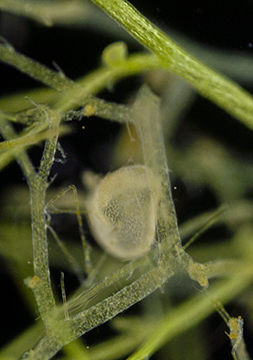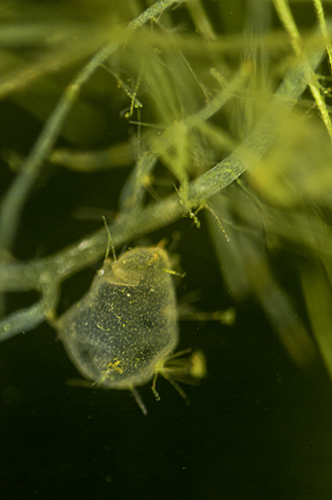Bladderworts (Utricularia)
 Utricularia, commonly called bladderworts consists of 220 species (227 or 215 depending on the source). They occur in fresh water and wet soil; they are the most diverse and widespread genus of carnivorous plants. Like the sundew, they are found in very continent except for Antarctica. Bladderworts can survive almost anywhere where there is fresh water for a portion of the year. They grow in moist soils that tend to have dissolved minerals. 80% of all the species are terrestrial and grow in tropical areas; the majority inhabits waterlogged or wet soils exposing the tiny bladders. The other 20% are aquatic. They inhabit ponds, muddy-bottomed waters, and only show above the surface when flowering. The name bladderwort is in reference to the bladder like traps. Utricularia derived from the Latin word utriculus that means wine flask or leather bottle.
Utricularia, commonly called bladderworts consists of 220 species (227 or 215 depending on the source). They occur in fresh water and wet soil; they are the most diverse and widespread genus of carnivorous plants. Like the sundew, they are found in very continent except for Antarctica. Bladderworts can survive almost anywhere where there is fresh water for a portion of the year. They grow in moist soils that tend to have dissolved minerals. 80% of all the species are terrestrial and grow in tropical areas; the majority inhabits waterlogged or wet soils exposing the tiny bladders. The other 20% are aquatic. They inhabit ponds, muddy-bottomed waters, and only show above the surface when flowering. The name bladderwort is in reference to the bladder like traps. Utricularia derived from the Latin word utriculus that means wine flask or leather bottle.
Trapping Mechanism
Bladderworts are believed to have the most sophisticated carnivorous trapping mechanism in the plant kingdom. The bladders have various shapes and sizes but they have a tendency to be broad bean shaped. The bladder walls are thin and transparent, but are rigid enough to maintain the bladder shape. The mouth of the trap is a circular or oval flap that is joined to the body to form a hinge. Velum, a soft membrane, stretches in a curve around the platform that the flap sits on to seal it. A second strip of springy cells crosses the flap right about the lower edge to provide flexibility for the bottom of the door to become a bendable lip. The outer cells of the bladder excretes mucus that contains sugars to attract prey. Terrestrial species have relatively small traps (can be as small as 0.2 mm). Aquatic species have larger bladders (as big as 1.2 cm). The aquatic species also have antennae branching from the mouth of the trap, this serves as a way to guide prey to the trap entrance and to fend off larger organisms that might trigger the trapping mechanism.
The trapping mechanism is solely mechanical; unlike for example, Venus Flytraps that require irritability in the presence of prey. As water pumps out, the bladder’s walls are sucked in by the partial vacuum created and any dissolved material within the bladder becomes more concentrated. The sides of the bladder bend inwards, storing potential energy. When no more water can be extracted, the bladder is fully set. The antennae act as levers; the sealed bottom thanks to the velum resists the suction force exerted by the bladder. Equilibrium is dependent on the hair/antennae trigger. The slightest touch from prey to the antennae will deform the door lip to create a tiny space thus breaking the seal. Once the seal is broken the bladder walls spring back into a rounder shape causing the flap to fly open and water sucked into the bladder drawing in the prey as well. Once the trap is filled the flap closes again. Once the prey is inside, the digestive secretions dissolve it. Dissolving prey takes between a few hours to several days, however the trap can be ready for its next capture in 15 to 30 minutes.


